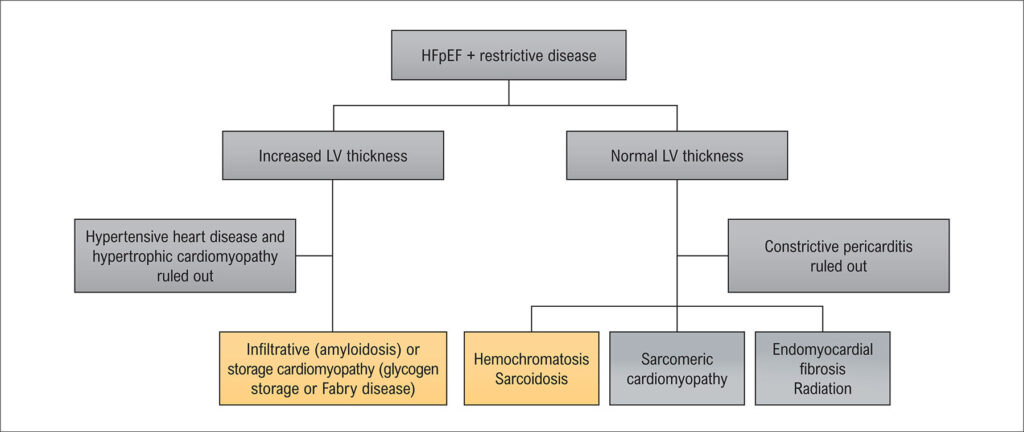ABC Heart Fail Cardiomyop 2022; 2(3): 319-321
When to Suspect Infiltrative or Storage Cardiomyopathy in Patients with HFpEF?
Heart failure with preserved ejection fraction (HFpEF) is a frequent clinical syndrome, and it has accounted for 40% to 50% of heart failure hospitalizations in several reports published in the literature., It is a distinctly heterogeneous syndrome, and, with this diversity of scenarios, patients with a restrictive cardiomyopathy phenotype have been increasingly identified, especially elderly patients with cardiac amyloidosis.
Restrictive cardiomyopathies are diseases of the heart muscle that can arise due to various etiologies, including genetic abnormalities, infiltrative diseases, and storage diseases. From a pathophysiological point of view, they have in common the fact that they cause an increase in ventricular rigidity. Their real prevalence is unknown, but they are considered the least common form of cardiomyopathies. The infiltrative and storage diseases that can cause HFpEF include diseases with very different characteristics and evolution, such as amyloidosis, sarcoidosis, hemochromatosis, lysosomal disorders, and glycogen storage disorders.
[…]
Keywords: Cardiomyopathies; Diagnosis; Heart Failure, Diastolic
1,407


